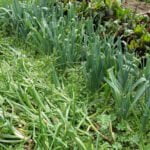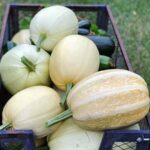Are you interested in creating your own vegetable garden but have limited space to work with? Vegetable gardens for small spaces offer a solution that allows you to grow your own produce, even in the smallest of areas.
In this article, we will explore the concept of vegetable gardening in limited spaces and the numerous benefits it provides. Whether you have a balcony, tiny backyard, or just a few pots on a windowsill, there are options for you to start growing your own vegetables at home.
Having a vegetable garden in a small space not only provides you with fresh, organic produce but also offers numerous other benefits. You can save money on grocery bills, reduce your carbon footprint by growing your own food, and enjoy the physical and mental health benefits of gardening.
This introductory section will provide an overview of what to expect from the rest of the article as we delve into selecting the right vegetables for small spaces, container gardening, vertical gardening, small space garden design, maintenance and care tips, creative space-saving techniques, and real-life success stories for inspiration.
From selecting the right vegetables to maximizing yield through innovative space-saving techniques, this article is designed to provide you with practical advice and inspiration for creating a thriving vegetable garden in even the smallest of spaces. Whether you’re new to gardening or have years of experience under your belt, there’s something for everyone here as we explore the world of vegetable gardens for small spaces.
Selecting the Right Vegetables
When it comes to creating vegetable gardens for small spaces, selecting the right vegetables is essential for a successful and bountiful harvest. The limited space available in small gardens means that careful consideration must be given to the types of vegetables chosen for planting. Factors such as sun exposure, soil quality, and size requirements all play a crucial role in determining which vegetables will thrive in a compact garden environment.
One of the first considerations when choosing vegetables for a small space garden is sun exposure. Most vegetables require plenty of sunlight to grow and produce an abundant harvest. It’s essential to assess the available sunlight in your garden area and select vegetables that are well-suited to the amount of sunlight they will receive. For example, leafy greens like lettuce and spinach can thrive with partial shade, while tomatoes and peppers typically need full sun exposure.
In addition to sun exposure, soil quality is another important factor to consider when selecting vegetables for small gardens. Many vegetables prefer well-draining soil that is rich in organic matter.
Conducting a soil test can help determine the pH level of the soil and any nutrient deficiencies that may need to be addressed before planting. Certain vegetables, such as root crops like carrots and radishes, require loose, sandy soil to develop properly, while others like tomatoes and peppers thrive in nutrient-rich loamy soil.
When it comes to size requirements, some vegetable plants naturally take up more space than others. For small gardens, it’s beneficial to choose compact or bush varieties of certain vegetables or those that can be grown vertically to maximize space. For example, bush beans are well-suited for small gardens because they don’t require trellising and take up minimal space compared to pole bean varieties.
| Consideration | Example |
|---|---|
| Sun Exposure | Lettuce and Spinach (Partial Shade) Tomatoes and Peppers (Full Sun) |
| Soil Quality | Carrots – Loose Sandy Soil Tomatoes – Nutrient-Rich Loamy Soil |
| Size Requirements | Bush Beans – Compact Varieties Suited for Small Gardens |
Container Gardening
Benefits of Container Gardening
One of the main advantages of container gardening is its flexibility and adaptability to various living situations. By using containers, you can easily move your plants to take advantage of sunlight or protect them from harsh weather conditions. Additionally, it allows individuals who may not have access to sufficient outdoor space to still enjoy the process of growing their own food.
Recommended Containers, Soil, and Watering Techniques
When choosing containers for your vegetable garden in a small space, opt for pots or planters that are appropriate for the size and growth habits of the specific vegetables you plan to cultivate. Additionally, ensure that the containers have drainage holes to prevent waterlogging and use high-quality potting mix specifically formulated for container gardening.
This type of soil provides excellent drainage and aeration while retaining moisture – essential for successful growth in restricted spaces. Implementing proper watering techniques such as monitoring soil moisture regularly and adjusting watering schedules based on weather conditions is crucial for maintaining healthy plants in container gardens.
Considerations for Success
To maximize the potential success of your vegetable garden in a limited space through container gardening, it’s important to consider factors such as the location’s sun exposure, wind patterns, and potential pest issues. Placing containers strategically to receive adequate sunlight and protection from strong winds can greatly impact plant health and productivity. Implementing natural pest control methods such as companion planting or using organic insecticides can also help maintain healthy crops in small scale vegetable gardens.
Vertical Gardening
When it comes to vertical gardening, there are various methods and structures that can be used to create a successful setup. Here are a few ideas for DIY vertical garden structures that you can consider for your own vegetable garden in a small space:
- Vertical trellises: These can be made from wood or metal and provide support for climbing plants like cucumbers, peas, and tomatoes.
- Hanging baskets: Ideal for growing herbs and smaller vegetables, hanging baskets can be hung from balconies or fences to optimize space.
- Tower gardens: These innovative structures allow you to grow multiple plants in a compact vertical system using hydroponic or aeroponic growing methods.
In addition to these DIY options, there are also commercially available vertical gardening systems that you can purchase to suit your specific needs. By incorporating vertical gardening into your small space vegetable garden, you’ll be able to grow a bountiful harvest without sacrificing a significant amount of space.
Small Space Garden Design
When designing a vegetable garden in a limited space, there are several important factors to consider in order to make the most of the area available. It is essential to plan and organize the garden layout effectively to optimize yield and ensure that all plants receive adequate sunlight, water, and nutrients. Additionally, incorporating companion planting techniques can help maximize space and enhance the overall health and productivity of the garden.
Layout Ideas
When working with a small space for a vegetable garden, vertical layouts are often the most efficient way to use the available area. Utilizing trellises, arches, and hanging planters can help keep plants off the ground and free up valuable space. Additionally, raised beds or container gardening can also create defined areas for different types of plants while maximizing soil usage.
Companion Planting
Companion planting is the practice of growing different types of plants together in close proximity to benefit one another in various ways. Some plants repel pests that may damage others, while some contribute necessary nutrients back into the soil. For example, planting basil near tomatoes can improve their flavor while also repelling pests that commonly affect tomato plants. Considering these interactions when planning a small space vegetable garden can lead to successful growth and higher yields.
Maximizing Yield
In a small space vegetable garden, it is essential to maximize yield by careful planning and maintenance. This can be achieved through practices such as interplanting compatible crops closely together, using succession planting to grow multiple crops throughout the season in the same area, and utilizing techniques like square foot gardening which helps organize crops based on size requirements and growing habits.
By carefully considering layout ideas, companion planting techniques, and strategies for maximizing yield in a small space garden design, individuals can create a productive vegetable garden regardless of limited area availability.
Overall, effective design practices coupled with proper care and maintenance will result in bountiful harvests from even the smallest vegetable gardens. With thoughtful planning and attention to detail, small spaces can provide an abundance of homegrown produce.
Maintenance and Care
Maintaining a vegetable garden in a small space requires careful attention to ensure the plants thrive and produce a bountiful harvest. Here are some essential tips for caring for your vegetable garden:
1. Watering: Proper watering is crucial for the success of a vegetable garden, especially in small spaces where soil can dry out quickly. Consider using a drip irrigation system or soaker hoses to deliver water directly to the roots of the plants, reducing water waste and promoting efficient absorption. Be sure to monitor the moisture level in the soil regularly and adjust your watering schedule as needed, taking into account factors such as weather conditions and plant requirements.
2. Fertilizing: To ensure your vegetables have the necessary nutrients for healthy growth, it’s important to fertilize your small space garden regularly. Look for a balanced fertilizer specifically designed for vegetable gardens and follow the application instructions carefully. Organic options such as compost or fish emulsion can also be effective choices for providing essential nutrients to your plants without the use of synthetic chemicals.
3. Pest Control: Small space gardens may be more susceptible to pest infestations, so it’s important to stay vigilant and implement effective pest control measures. Consider using natural remedies like neem oil or insecticidal soap to deter common pests while minimizing harm to beneficial insects. Regularly inspect your plants for signs of pests or disease, and take prompt action to address any issues before they escalate.
4. Harvesting Tips: The key to enjoying a fruitful vegetable garden is harvesting at the right time. Keep an eye on your crops and harvest them when they reach peak ripeness, as this will ensure the best flavor and nutritional value. Regularly picking mature vegetables also encourages additional yield by making room for new growth.
Carefully tending to your vegetable garden in a small space with proper watering, fertilizing, pest control, and harvesting techniques will help you cultivate a thriving oasis of fresh produce right at home. By incorporating these maintenance practices into your gardening routine, you can enjoy a successful and rewarding harvest even in limited outdoor spaces like urban balconies or small backyard patios.
Creative Space-Saving Techniques
When dealing with limited space, it’s essential to get creative and maximize every inch of available area. One approach to achieving this is through interplanting, which involves planting different crops in the same space. This technique not only saves space but also promotes biodiversity and can help deter pests. For example, planting herbs alongside vegetables can provide natural pest protection and save space at the same time.
Another popular method for small-space gardening is square foot gardening. This technique involves dividing the garden into small square sections and growing different plants within each section. Not only does this make for efficient use of space, but it also simplifies the planning process and makes it easier to manage the garden.
Additionally, utilizing vertical space is a game-changer for small gardens. Whether it’s using trellises for vining plants or hanging planters for smaller vegetables and herbs, going vertical can significantly increase the amount of produce you can grow in a limited space.
These innovative techniques are all ideal options when working with vegetable gardens for small spaces.
| Space-Saving Technique | Description |
|---|---|
| Interplanting | Planting different crops in the same space to save space and promote biodiversity. |
| Square Foot Gardening | Dividing the garden into small square sections to efficiently manage and utilize space. |
| Utilizing Vertical Space | Growing plants upward on trellises or using hanging planters to maximize growing potential. |
Success Stories and Inspiration
In conclusion, vegetable gardens for small spaces offer a multitude of benefits and opportunities for home gardeners. By carefully selecting the right vegetables and utilizing space-saving techniques such as container gardening and vertical gardening, anyone can enjoy the satisfaction of growing their own produce at home, regardless of limited space. With the right planning and maintenance, even small urban balconies or tiny backyard corners can be transformed into thriving vegetable gardens.
One of the most important aspects of creating a successful vegetable garden in a small space is thoughtful design and careful selection of plants. By choosing compact varieties, utilizing vertical space, and employing creative interplanting techniques, it’s possible to maximize yields and grow a diverse range of vegetables even in limited areas. Additionally, success stories and inspiration from other home gardeners can provide valuable motivation and practical ideas for those embarking on their own small-space gardening journey.
From custom DIY vertical structures to carefully planned container gardens, there are countless possibilities for creating productive vegetable gardens in small spaces. As more people seek to grow their own food at home, the popularity of these innovative gardening methods continues to grow. With the right guidance and a bit of creativity, anyone can enjoy the rewards of growing fresh vegetables in even the smallest of spaces.
Frequently Asked Questions
What Vegetables Are Good for Small Spaces?
Vegetables that are good for small spaces include cherry tomatoes, green beans, radishes, and peppers. These plants can thrive in containers or small garden beds, making them perfect for limited space.
What Vegetable Needs the Least Amount of Space?
When it comes to needing the least amount of space, leafy greens like lettuce and spinach are great options. They can be grown closely together and harvested as needed, maximizing the use of small garden areas.
What Are Good Vegetables to Grow in a Small Garden?
Good vegetables to grow in a small garden include carrots, cucumbers, zucchini, and herbs like basil and parsley. These vegetables are compact and can be easily grown in raised beds or containers, making them ideal for limited gardening space.

If you’re looking to get into vegetable gardening, or are just looking for some tips on how to make your current garden better, then you’ve come to the right place! My name is Ethel and I have been gardening for years. In this blog, I’m going to share with you some of my best tips on how to create a successful vegetable garden.





